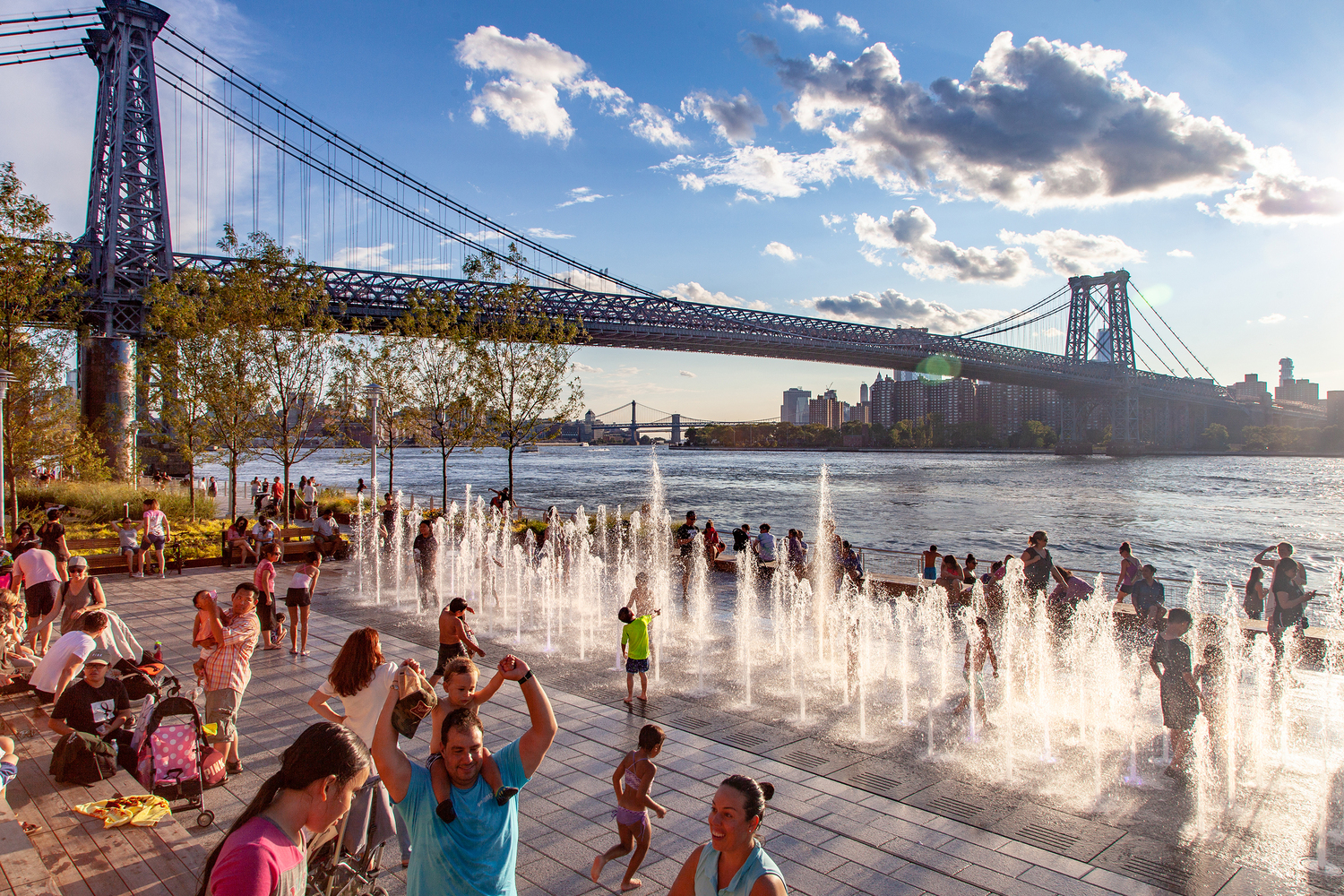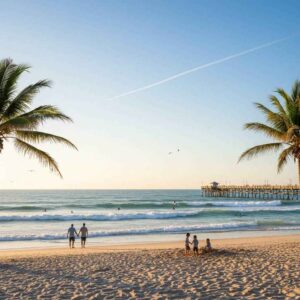Domino Park: A Complete Visitor Guide to Brooklyn’s Waterfront Park
If you are planning to explore New York City and looking for a peaceful yet lively outdoor spot, Domino Park is a place you must visit. Located in Williamsburg, Brooklyn, this park offers amazing riverfront views, open lawns, walking paths, playgrounds, and relaxing spaces for everyone. It is especially loved by families, tourists, couples, and locals love travel and want to enjoy the outdoors without going far from the city.
In this guide, we will talk about where Domino Park is, what to do there, how to reach it, timing, nearby attractions, and helpful tips to plan your visit.
What is Domino Park?
Domino Park is a public waterfront park built on the old site of the Domino Sugar Factory in Brooklyn. The park was opened in 2018 and is designed beautifully with a mix of greenery, art, history, and modern experiences. Thanks to its location on the East River, the park offers wonderful views of the Manhattan skyline and Williamsburg Bridge, and it’s also close to popular spots like Other Half Brewing Domino Park, making it a great stop for those who enjoy good food and drinks after a walk.
The park is spread over 5 acres and provides different sections for both relaxing and activities. Whether you want to walk, eat, take photos, play with kids, or simply sit by the river, the Brooklyn riverside park is a good choice.
Where is Domino Park Located? (Domino Park Brooklyn Location)
The waterfront park is located in Williamsburg, Brooklyn, New York City.
Address:
300 Kent Ave, Brooklyn, NY 11249, United States
This location makes it easy to access by subway, bus, ferry, or car. Williamsburg is already known for its cafes, creative shops, and artistic vibe, and with nearby spots like Other Half Brewing Domino Park, many visitors enjoy exploring the neighborhood along with the park.
Best Time to Visit Brooklyn waterfront park
Domino Park is open daily from morning till evening. The best time to visit depends on your preference:
| Time of Day | Why Visit |
|---|---|
| Morning | Calm, perfect for walks and exercise |
| Afternoon | Families and kids’ activities |
| Sunset | Beautiful Manhattan skyline views |
| Night | Relaxing atmosphere with lights and river breeze |
Spring and fall are popular seasons because the weather is pleasant.
Things to Do in Domino Park
There are many things you can enjoy while exploring The waterfront park in Williamsburg:
1. Walk Along the Elevated Walkway: There is a raised walkway that gives visitors a clear view of the river and skyline. It is one of the best places for photography.
2. Relax on the Great Lawn: The big grassy lawn area is perfect for sitting, reading, picnics, or just enjoying the weather.
3. Enjoy the Water Features: In summer, children can play in the splash fountain area. It is safe and fun.
4. Visit the Playground: A large playground with climbing structures and slides makes the park enjoyable for families with kids, Similar to the fun and family-friendly vibe you’ll also find at Meyer Park.
5. Eat at Local Food Spots: There are many food stalls, cafes, and restaurants near the park. You can enjoy tacos, pizza, ice cream, coffee, and more.
6. Take Beautiful Photos: The views from the park are stunning, especially during sunset. Many tourists visit just to take photos of the skyline and river.
How to Reach Domino Park
There are many transportation options:
| Transport | Directions |
|---|---|
| Subway | Take the L train to Bedford Avenue and walk 10 minutes |
| Bus | Several local buses stop near the park |
| Ferry | NYC Ferry stops at South Williamsburg Terminal |
| Car | Limited street parking available |
The NYC Ferry is one of the most scenic ways to arrive.
Is Domino Park Free?
Yes, Domino Park is completely free to enter. You do not need tickets.
However, you may need to pay for food or drinks if you buy from nearby vendors.
Nearby Attractions to Domino Park Brooklyn
You can also explore:
-
Williamsburg Bridge
-
East River State Park
-
Brooklyn Brewery
-
McCarren Park
-
Williamsburg shopping streets
These nearby places can easily turn your visit into a full day trip.
Tips for Visiting Domino Park
-
Arrive during weekday mornings to avoid crowds.
-
Bring sunscreen and water, especially in summer.
-
If visiting with kids, carry an extra towel for water play.
-
Stay until sunset for the best views.
-
Keep the park clean and respect public spaces.
Conclusion
The Brooklyn riverside park is one of the best places to experience the beauty of Brooklyn’s waterfront. Whether you are a local or a tourist exploring the city, the park offers a relaxing and memorable day outdoors. With its views, open spaces, playground, and friendly environment, Domino Park Brooklyn is a must-visit destination and its closeness to Other Half Brewing Domino Park makes the experience even better for visitors who want to enjoy a refreshing drink after their walk.
For more travel guides and destination tips, visit The Tourists World and explore beautiful locations around the globe.
FAQs
1. What is Domino Park known for?
Domino Park is known for its beautiful riverfront views, walking paths, playground, and connection to the historic Domino Sugar Factory site.
2. How long does it take to explore Domino Park?
You can enjoy the whole park in 1 to 2 hours, but many visitors stay longer to relax, eat, or watch the sunset.
3. Is Domino Park good for families?
Yes, it is family-friendly with a big playground, splash area, and open lawns.
4. Can I bring food to Domino Park?
Yes, picnics are allowed. You can also purchase food from nearby cafes and food vendors.
5. Is Domino Park pet friendly?
Yes, pets are welcome, but they must be on a leash.
6. Can I visit Domino Park at night?
Yes, the park stays open into the evening and is safe and well-lit.
7. Do I need a reservation to visit Domino Park?
No, reservations are not required. It is a public park and free for everyone.
8. How do I get to Domino Park Brooklyn by subway?
Take the L train to Bedford Avenue, then walk about 10 minutes to the park.






